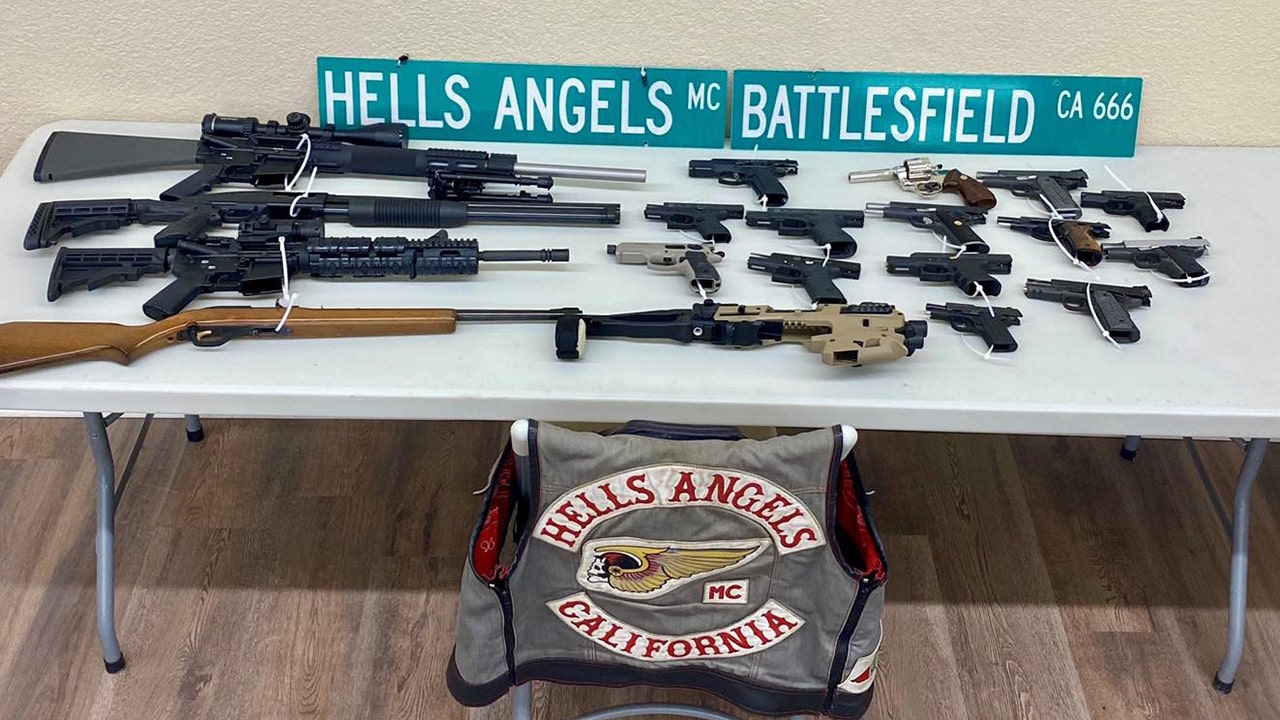Did the Ithaca Model 37 save bump stocks? It certainly played a role. The Ithaca Model 37 allows the shooter to continuously hold the trigger back and fire each time the slide is cycled. Thus, the trigger was not “pulled” each shot, but there was a separate and distinct action required for each shot. The ATF admits the Model 37 is not a machinegun.
The Decision and Dissent
Reading both the Decision and Dissent from Supreme Court was enlightening. One of the most striking statements came from Justice Alito, in support of the majority, “The horrible shooting spree in Las Vegas in 2017 did not change the statutory text or its meaning.”
Let’s face it though, that’s exactly what happened after a little push from the President.
Prior to the 2017 Las Vegas shooting, ATF ruled that attaching a bump stock to a semiautomatic rifle did not constitute modifying the firearm to a machinegun. Then, after the shooting spree and at the behest of the Trump Administration, ATF reversed its ruling and classified bump stocks as machineguns. Justice Alito continued, “But an event that highlights the need to amend a law does not itself change the law’s meaning.”
You can rewrite the language and highlight different interpretations of the words, but the fact remains, the ATF only reversed its decision because the Executive Branch of government requested it. The mechanics of the device were exactly the same. The impetus for the change was a single, horrific event, from one individual, and a call from the President.
You may support the ownership of bump stocks or oppose the devices. That is your choice. The true victory of the ruling has little to do with bump stocks. Second Amendment Foundation founder and Executive Vice President Alan M. Gottlieb summed it up the best, “The agency [ATF] has just been reminded that it can only enforce the law, not usurp the authority of Congress.”
Congress passed the National Firearms Act of 1934, Gun Control Act of 1968, etc. The ATF has the authority to rule on the legality and function of new technologies, but it cannot then reverse its opinion at the whims of the current President… if the law needs to be amended, it must go through the Legislative Branch, Congress. It’s called the ‘separation of powers.’
Details Matter: The Scorecard
Justice Thomas wrote the opinion for the majority with Justices Roberts, Alito, Gorsuch, Kavanaugh, and Alito joining.
Justice Thomas points out two reasons bump stocks do not qualify as machineguns — primarily the National Firearms Act of 1934. Under the National Firearms Act of 1934, a “machinegun” is “any weapon which shoots, is designed to shoot, or can be readily restored to shoot, automatically more than one shot, without manual reloading, by a single function of the trigger.” §5845(b). The statutory definition also includes “any part designed and intended… for use in converting a weapon into a machinegun.”
Bump firing a rifle is not automatic. It is not as simple as pulling the trigger to achieve a bump fire. Justice Thomas points out, “Bump firing is a balancing act. The shooter must maintain enough forward pressure to ensure that he will bump the trigger with sufficient force to engage it. But, if the shooter applies too much forward pressure, the rifle will not slide back far enough to allow the trigger to reset. The right balance produces a reciprocating motion that permits the shooter to repeatedly engage and release the trigger in rapid succession.”
This description, of the mechanics of a bump fire stock, outlines two separate actions — pull of the trigger and application of the correct amount of forward pressure (while using the hand grip to apply rearward pressure to the shoulder). This fact, in and of itself, demonstrates that a bump stock does not fit the definition of a machinegun.
When a bump stock is compared to the action of the Ithaca Model 37, both require the shooter to:
- Hold the rifle tight to the shoulder.
- Pull the trigger.
- Apply forward pressure to the forend to shoot more than one shot per pull of the trigger.
The ATF concedes this point but countered that that a bump stock ‘harnesses’ the power of the recoil, where the Model 37 requires more physical involvement by the shooter. Justice Thomas countered, “A law is not useless merely because it draws a line more narrowly than one of its conceivable statutory purposes might suggest.
“Moreover, it is difficult to understand how ATF can plausibly argue otherwise, given that its consistent position for almost a decade in numerous separate decisions was that §5845(b) does not capture semiautomatic rifles equipped with bump stocks.”
Again, it was not the addition of a bump stock, it was political pressure for the purpose of creating feel good politics (A tragic event happens. To gain support from voters, a rule or law is passed to make the people feel as if lawmakers found a remedy that will prevent the tragedy from being repeated. However, in reality, nothing changed. In this case, a mass murderer would commit the crime regardless of the law.)
Justice Sotomayor’s dissent to this point would be laughable, if it was not so tragic.
“A shooter can also manually “bump” an AR–15 to increase the rate of fire by using a belt loop or rubber band to hold his trigger finger in place and harness the recoil from the first shot to fire the rifle continuously. To use a belt loop, he must hold the rifle low against his hip, put his finger in the trigger guard, and then loop his finger through a belt loop on his pants to lock the finger in place. With his other hand, he then pushes the rifle forward until his stationary finger engages the trigger to fire the first shot. The recoil from that shot pushes the rifle violently backward. If the shooter keeps pressing the rifle forward against the finger in his belt loop, the repeated backward jump of the recoil combined with his forward pressure allows the rifle to fire continuously.”
And here is the part I cannot imagine a Supreme Court Justice relying on…
“A shooter using this method, however, cannot shoot very precisely. He has neither the advantage of the sights to line up his shot, nor his shoulder to stabilize the recoil.”
Really? Is that her reasoning? Using a bump stock is more accurate, so it should be outlawed? First off, for all but those humans with superpowers, full-auto fire is anything but what I would call accurate. Second, and more importantly, where in the National Firearms Act of 1934 or Gun Control Act of 1968 does it mention “accuracy” as a criterion of what constitutes a machinegun? If achieving bump fire is as easy as attaching a rubber band or hooking your thumb to your belt loop, (both in common usage by the way), a bump stock is irrelevant to the argument — unless they are going to outlaw rubber bands and return humans to the animal world by cutting off our opposable thumbs at birth!
Of all the provisions Congress included in the National Firearms Act of 1934 — that the ATF and dissenting opinions are relying on to classify bump stocks as machine guns — where does it mention or define the rate of fire that makes a gun a machine gun? Simply because bump stocks “approach the rate of fire of a machine gun” does not make them machine guns under the current definition.
The National Firearms Act of 1934 specifically defined a machinegun as a gun that could fire more than one bullet “automatically… by a single function of the trigger.” It did not specify, “a machinegun is a firearm capable of shooting ‘X number of rounds’ per minute.” Therefore, the dissenting Justices should not rewrite/misstating law to bolster their argument. However, it does reveal the weakness in their position.
In Justice Alito’s concurrence with the majority opinion he states, “…an event that highlights the need to amend a law does not itself change the law’s meaning.
“There is a simple remedy for the disparate treatment of bump stocks and machineguns. Congress can amend the law — and perhaps would have done so already if ATF had stuck with its earlier interpretation. Now that the situation is clear, Congress can act.”
The Weakness of the Dissent’s Argument
In her dissent, Justice Sotomayor wrote, “Congress adopted a definition of ‘machinegun’ that captured ‘any weapon which shoots, or is designed to shoot, automatically… more than one shot, without manual reloading, by a single function of the trigger.’”
Justice Sotomayor’s argument is shortsighted. Pick up a machine gun one handed and pull the trigger. You’ll fire multiple shots, most likely in an arcing pattern. Pick up a bump fire stock-equipped firearm and shoot it with one hand. The gun will only fire one bullet. Why? It requires additional actions (pulling the stock to the shoulder while pushing the forend forward) to cycle the trigger and fire additional shots.
Justice Sotomayor goes on to later state, “Semiautomatic weapons are not “machineguns” under the statute. Take, for instance, an AR–15-style semiautomatic assault rifle. To rapidly fire an AR–15, a shooter must rapidly pull the trigger himself. It is “semi” automatic because, although the rifle automatically loads a new cartridge into the chamber after it is fired, it fires only one shot each time the shooter pulls the trigger.
“A machinegun does not fire itself. The important question under the statute is how a person can fire it. A weapon is a “machinegun” when a shooter can (1) “by a single function of the trigger,” (2) shoot “automatically more than one shot, without manually reloading.” 26 U. S. C. §5845(b). The plain language of that definition refers most obviously to a rifle like an M16, where a single pull of the trigger provides continuous fire if the shooter maintains backward pressure on the trigger.”
However, when the one-handed scenario is again applied, her argument fails. It is not a single pull of the trigger that increases the rate of fire. It is the rearward and simultaneous forward pressure that allows the bump stock to assist in cycling the trigger through the actuation/reset cycle that causes additional rounds to be fired.
Inexplicably, Justice Sotomayor seems to chide the majority by stating, “The majority looks to the internal mechanism that initiates fire, rather than the human act of the shooter’s initial pull, to hold that a “single function of the trigger” means a reset of the trigger mechanism.” Yet, multiple times in her arguments, Justice Sotomayor used “a single pull of the trigger”, a mechanical device and in no way attempts to be consistent that it is a function of the shooter.
This shows a lack of understanding of both the National Firearms Act of 1934 and the operation of a firearm. The language, plainly written in the NFA of 1934 states “any weapon which shoots, is designed to shoot, or can be readily restored to shoot, automatically more than one shot, without manual reloading, by a single function of the trigger.” Not a single function of the shooter to pull of the trigger).
Conclusion
For those who listened to oral arguments or read the transcripts from last October’s hearing, it was clear that a majority of the Court supported the effort to regulate bump stocks and classify them as something akin to a machinegun due to the rate of fire a shooter can achieve, and the devastation that mat be caused in the wrong hands. But even considering this, the Las Vegas shooter would have passed any background test or additional scrutiny. Fully-automatic firearms are legal in Nevada. It requires more money and paperwork, but the outcome would have been the same.
The majority, often identified as the ‘conservative’ Justices, applied the wording of the law over personal prejudices — as it should be. The dissenting Justices subscribed to reinterpretations of language, misstatements of fact, and an outright dismissal of the language of the law to further their already weak position.
When asked, “Should bump fire stocks be classified as machine guns?” My answer is the same as most gun control questions thrown my way. Are you truly concerned with how fast someone can shoot, the type of weapon used, or the fact that a murder was committed. If your answer is murder, perhaps you should be seeking additional laws making murder more illegal — if you think that will somehow magically prevent a deranged person’s murderous intent.
While many look at this ruling as a victory for the Second Amendment, I fear how Congress will respond to the Supreme Court’s decision. Should the anti-gun members of Congress (primarily Democrats, but some Republicans) be in the majority, I do not believe they will limit a new law to bump stocks. They will not be satiated with one small bite, when they think they can get the whole pie… Do your homework and elect pro Second Amendment legislators or suffer the consequences and lose your rights forever.
What’s your opinion of bump stocks? Will Congress eventually outlaw them? Will that make the citizenry any safer? Share your thoughts on bump stocks in the Comment Section.
Read the full article here





